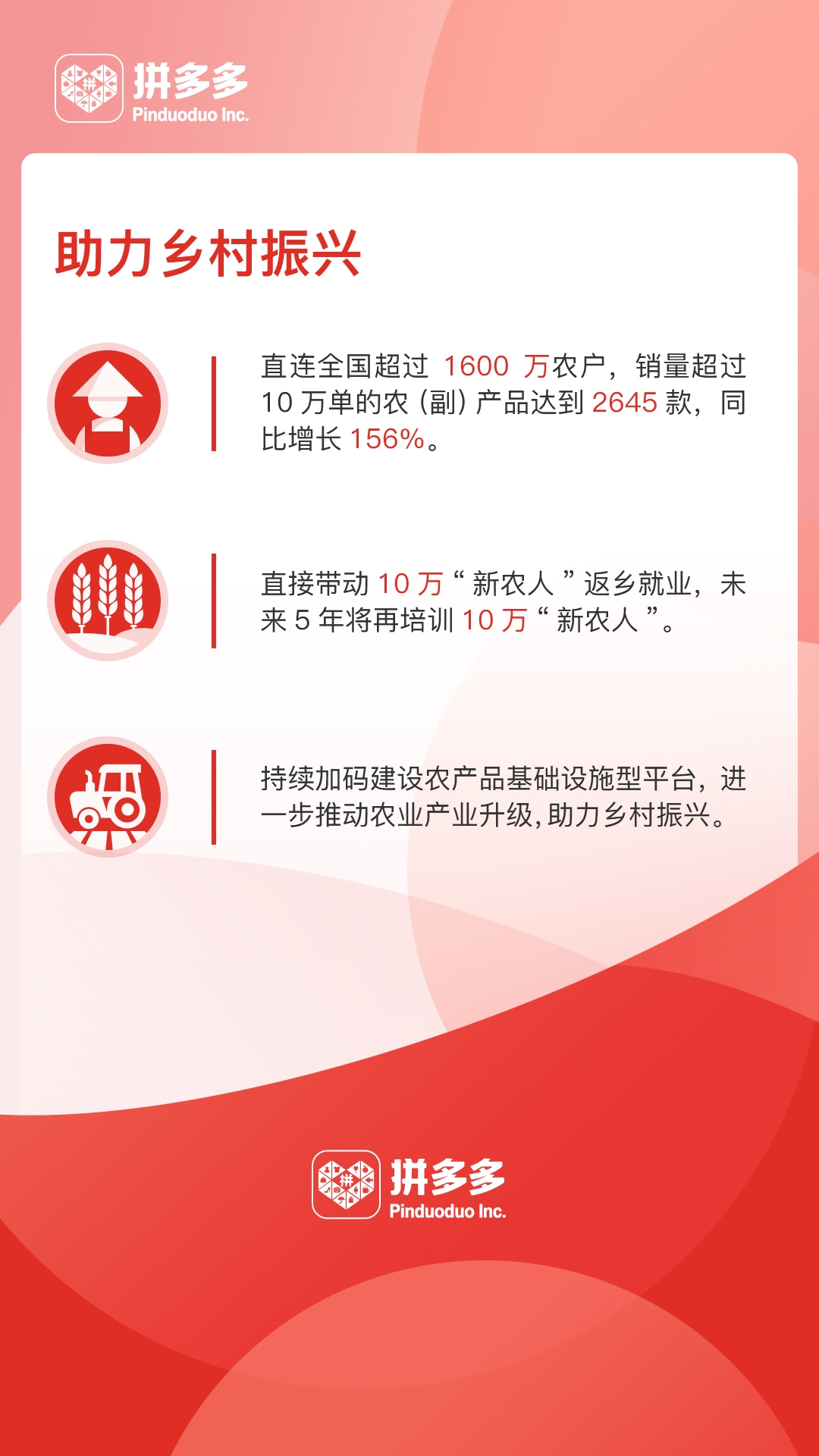Introduction
Pinduoduo (PDD), founded in 2015, has rapidly risen to become one of China’s largest e-commerce platforms, competing with industry giants like Alibaba and JD.com. Its innovative “social e-commerce” model, which leverages group buying through social media, has attracted hundreds of millions of users, particularly from China’s lower-tier cities and rural areas. However, Pinduoduo’s meteoric growth has been accompanied by controversies ranging from product quality issues to labor rights concerns. This article provides a comprehensive analysis of Pinduoduo, exploring its business model, market position, challenges, and its broader implications for China’s e-commerce landscape.

1. The Business Model: Social E-commerce and Group Buying
Pinduoduo’s success is largely attributed to its unique group buying model, which distinguishes it from traditional e-commerce platforms. Users can form groups with friends or other users to purchase products at lower prices, often by sharing product links on social media platforms like WeChat. This blend of social interaction and shopping has created a viral, network-driven growth model.
1.1 The Power of Group Buying
Pinduoduo’s core strength lies in its ability to engage users through social incentives. By offering discounts for group purchases, it taps into the psychology of consumers seeking a good deal while leveraging the network effects of social sharing. This reduces customer acquisition costs compared to traditional advertising models, as users themselves help promote the platform to their friends and families.
1.2 Scalability and Sustainability
While the group buying model has fueled Pinduoduo’s rapid growth, its long-term sustainability is a topic of debate. The platform’s success relies heavily on offering products at extremely low prices, often subsidized by the company through significant discounts. As Pinduoduo scales, maintaining these subsidies while achieving profitability could prove challenging, especially as competition intensifies.
2. Market Penetration: Success in Lower-Tier Cities
One of Pinduoduo’s key strategies has been its focus on China’s vast, underserved lower-tier cities and rural markets. These regions were relatively untapped by e-commerce giants like Alibaba, making them a fertile ground for Pinduoduo’s rapid expansion.
2.1 Catering to Price-Sensitive Consumers
Pinduoduo’s value proposition is centered around offering lower-priced goods, which appeals directly to the more price-sensitive consumers in China’s lower-income regions. The platform sells everything from fresh produce to electronics, often at prices significantly below those of traditional e-commerce platforms. This approach has resonated strongly with rural consumers, for whom affordability is a key purchasing factor.

2.2 E-commerce Democratization
In addition to offering lower prices, Pinduoduo has also contributed to the democratization of e-commerce in China. By focusing on underserved markets and simplifying the online shopping experience, it has brought millions of new users—many of whom had limited exposure to e-commerce—into the digital economy. This has not only expanded Pinduoduo’s user base but also increased e-commerce penetration in rural areas.
3. Controversies: Fake Goods, Quality Issues, and Trust Deficits
Despite its rapid growth, Pinduoduo has faced significant criticism, particularly around the quality of products sold on its platform. Fake goods and substandard products have been a recurring issue, casting a shadow over its reputation.
3.1 Fake and Low-Quality Products
One of the most persistent problems plaguing Pinduoduo is the prevalence of counterfeit and poor-quality goods. Due to its relatively lenient vendor entry standards and its emphasis on low-cost products, the platform has attracted numerous sellers offering fake or poorly made items. This has resulted in consumer dissatisfaction, with many users complaining about receiving products that did not meet their expectations.
3.2 Brand Trust and Image Crisis
The issue of counterfeit goods has undermined Pinduoduo’s brand trust. Unlike platforms such as JD.com, which emphasizes quality control and premium services, Pinduoduo is often perceived as a “budget” platform, associated with inferior products. Building long-term trust with consumers, particularly in more affluent markets, will be a major challenge for the company as it seeks to expand its influence beyond lower-tier cities.
3.3 Platform Efforts to Improve Quality
In response to the backlash, Pinduoduo has taken steps to combat counterfeit goods and improve product quality. The company has launched various initiatives aimed at vetting sellers more rigorously and enhancing consumer protection measures. Additionally, the introduction of the “100 Billion Yuan Subsidy” program, which offers substantial discounts on well-known, high-quality brands, is an effort to diversify its product offerings and attract more discerning consumers.

4. Labor Rights and Corporate Responsibility
Pinduoduo’s internal practices, particularly its treatment of employees, have come under scrutiny. In 2021, reports of employee deaths, allegedly due to overwork, sparked public outrage and ignited debates about labor practices within China’s tech industry.
4.1 Employee Welfare and “996” Work Culture
Like many Chinese tech companies, Pinduoduo has been criticized for its intense work culture, commonly referred to as “996”—working from 9 a.m. to 9 p.m., six days a week. The tragic deaths of two Pinduoduo employees in 2021 brought this issue to the forefront. These incidents raised questions about the company’s corporate responsibility and the high-pressure work environments that are prevalent in the Chinese tech sector.
4.2 Public Backlash and the “Techlash”
The controversy surrounding employee welfare at Pinduoduo reflects a broader societal shift in China, where public dissatisfaction with exploitative labor practices—often referred to as “techlash”—has been growing. As Pinduoduo continues to expand, it will need to address these concerns not only to improve employee morale but also to avoid reputational damage in an increasingly socially conscious market.
5. Pinduoduo’s Role in Agricultural Digitalization
Pinduoduo’s impact goes beyond retail; it has also played a pivotal role in agricultural digitalization. The platform has been instrumental in connecting rural farmers with urban consumers, fostering the growth of China’s agricultural e-commerce sector.
5.1 Direct Farm-to-Consumer Model
One of Pinduoduo’s key contributions has been its support for the direct farm-to-consumer sales model, which allows farmers to sell their produce directly to consumers without intermediaries. This shortens the supply chain and provides farmers with better margins, while consumers benefit from lower prices for fresh, locally sourced produce.

5.2 E-commerce and Rural Poverty Alleviation
Pinduoduo’s efforts in promoting rural e-commerce have had a positive impact on poverty alleviation in some regions. By providing rural farmers with access to a broader market, the platform has created new income streams for low-income communities, aligning with China’s broader goal of rural revitalization.
6. Future Outlook: Challenges and Opportunities
As Pinduoduo looks to the future, it faces both opportunities and significant challenges. The company’s focus on lower-tier cities has been successful, but expanding into higher-tier markets and internationalizing its business will require significant adjustments.
6.1 Expanding into Premium Markets
To move beyond its reputation as a budget platform, Pinduoduo needs to enhance its product offerings and improve its brand image. Attracting more affluent, urban consumers will require higher-quality products, better customer service, and a stronger commitment to curbing counterfeit goods.
6.2 International Expansion
Pinduoduo has signaled intentions to expand internationally, particularly in Southeast Asia and other emerging markets. However, competing with established global e-commerce players like Amazon and Alibaba will require Pinduoduo to refine its logistics, supply chain management, and marketing strategies.
6.3 Enhancing Corporate Responsibility
Addressing labor rights and improving corporate social responsibility will be critical for Pinduoduo’s long-term success. With increasing public scrutiny on tech companies’ treatment of workers and their broader societal impact, Pinduoduo must take concrete steps to demonstrate its commitment to ethical business practices.

Conclusion
Pinduoduo’s rise is a remarkable story of innovation and disruption in China’s e-commerce landscape. Its success, driven by social commerce and a focus on underserved markets, has reshaped the industry. However, the company faces significant challenges, including improving product quality, addressing labor rights concerns, and building brand trust. How Pinduoduo navigates these challenges will determine whether it can sustain its growth and compete on a global scale. As it continues to evolve, Pinduoduo’s story offers valuable insights into the future of e-commerce in China and beyond.



